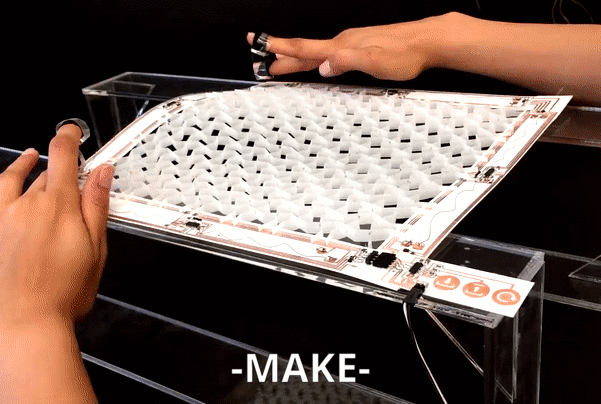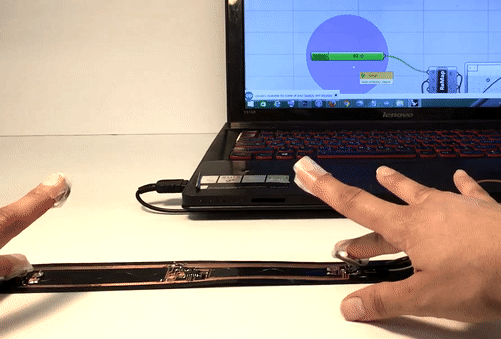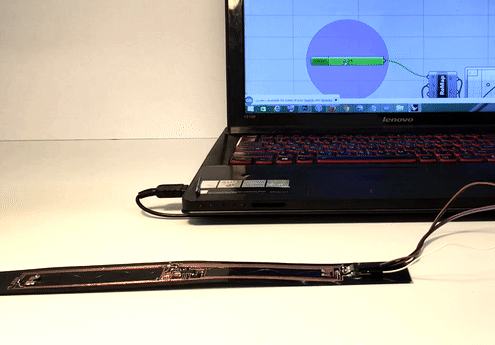Augmented Matter
Research | MIT School of Architecture | 2017 | [Ongoing] Master's Thesis Project
Following up on NURBSForms project, and aimed to create an interface capable of generating variable “shapes” in physical form, scalability (defined as size + resolution) was a significant barrier, which has also been a weakness in related previous work. In order to overcome this issue, “Modularization” became the leading approach for Augmented Matter: NURBSForms 2.0.
Each NURBS base curve –i.e. one curve with one control point on its midpoint- is embedded with two pieces of Shape Memory Alloy, which enables it to curve in both directions, with the amount of curvature being determined through Pulse Width Modulation (PWM) of electric voltage. Each strip is also embedded with touch sensors, enabling it to sense human interaction. On two ends, there are connections ports which enables physical connection to neighboring modules.In order to maximize the scalability, the highest level autonomy is provided for base modules through embedding each module with a micro controller. This enables modules to be “programmed” to have specific interactive behavior, and also take advantage of advanced communication protocols (i.e. I2C) between microprocessors.
 |  Base modules of NURBSForm, embedded with Micro-contoller, sensors, actuators, and printed circuitry. |
|---|---|
 1*1 NURBSForm surface, programmed to be controlled through direct manipulation, while enabling Memory/Time-Manipulation Functions such as Save, Load, Undo, Redo. |  2*2 NURBS Surface made from base modules |
 NURBSForm Module programmed to be controlled by user's hands interaction |  NURBSForm Module Programmed to be controlled via CAD Software |